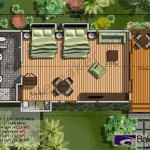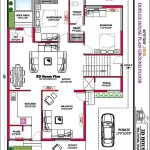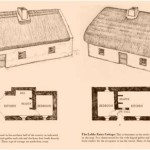```html
Ontario Small Home Plans: A Comprehensive Guide
Ontario's diverse landscape and thriving economy make it an attractive place to live. However, the rising cost of housing has led many individuals and families to consider smaller living spaces. Small home plans, offering efficient space utilization and reduced construction costs, are becoming increasingly popular in the province. This article provides a detailed overview of Ontario small home plans, exploring various aspects ranging from design considerations and building codes to financing options and common challenges.
Small home plans in Ontario encompass a wide range of architectural styles and sizes. Generally, homes under 1,200 square feet are considered small, but the definition can vary based on individual needs and preferences. These plans can include detached houses, laneway homes, accessory dwelling units (ADUs), tiny houses, and even smaller condominiums or apartments. The appeal lies in affordability, reduced environmental impact, and a more manageable lifestyle. Properly designed small homes can offer all the essential amenities of larger houses while minimizing maintenance and utility costs.
Key Point 1: Design Considerations for Ontario Small Homes
Designing a small home in Ontario requires careful planning and consideration of several factors. Maximizing space is paramount, and this often involves incorporating multi-functional spaces and smart storage solutions. Open-concept layouts are frequently employed to create a sense of spaciousness and improve natural light flow throughout the home. Vertical space is also crucial to exploit; loft areas, high ceilings, and strategically placed shelving can significantly enhance storage capacity and the overall feeling of openness.
Natural light is a crucial element in small home design. Large windows and skylights can brighten interiors and make them feel less cramped. Strategic placement of windows not only maximizes daylight but also provides ventilation, contributing to a healthier indoor environment. Thoughtful window placement can also take advantage of solar gains in winter, reducing heating costs.
The choice of materials impacts both the aesthetics and functionality of a small home. Durable, low-maintenance materials are preferred to minimize upkeep. Locally sourced materials can reduce transportation costs and environmental impact. Consider using light colours for walls and ceilings to enhance the feeling of spaciousness, and incorporate mirrors strategically to reflect light and create an illusion of greater size.
Accessibility is an often-overlooked aspect of small home design. As demographics shift, ensuring the home is adaptable for future needs is important. Features like wider doorways, curbless showers, and lever-handled hardware can make the home more accessible for individuals with mobility challenges. Universal design principles, which focus on creating spaces usable by people of all ages and abilities, should be integrated into the design process.
Climate considerations are also very important in Ontario. Designing for cold winters and hot summers is essential for energy efficiency and comfort. This involves selecting appropriate insulation levels, high-performance windows, and energy-efficient heating and cooling systems. Passive solar design, which utilizes the sun's energy for heating and cooling, can further reduce energy consumption.
Key Point 2: Ontario Building Codes and Regulations
All construction in Ontario must adhere to the Ontario Building Code (OBC), a comprehensive set of regulations designed to ensure the safety and structural integrity of buildings. Small home plans are subject to the same building code requirements as larger homes. Obtaining the necessary permits is a crucial step in the construction process. Permits ensure that the building plans comply with local zoning bylaws and the OBC.
Zoning bylaws regulate land use and development within a municipality. These bylaws specify permitted building types, minimum lot sizes, setbacks from property lines, height restrictions, and other parameters. Before developing any small home plans, it is critical to consult with the local municipality to understand the applicable zoning regulations. This will prevent costly delays and ensure compliance with the law.
Energy efficiency is a core component of the OBC. New homes must meet minimum energy performance standards, which are designed to reduce energy consumption and greenhouse gas emissions. The OBC includes provisions for insulation levels, window performance, air tightness, and heating and cooling system efficiency. Understanding these requirements is essential for designing an energy-efficient small home.
Fire safety regulations are also a critical consideration. The OBC specifies requirements for fire-resistant construction, smoke alarms, and fire separations. Ensuring that the small home design meets these requirements is paramount for protecting the safety of occupants. Sprinkler systems may be required in some cases, depending on the size and configuration of the home.
Plumbing and electrical systems must also comply with the OBC. Licensed plumbers and electricians must be hired to install these systems. Inspections are required to ensure that the installations meet the code requirements. Proper ventilation is also essential to prevent moisture buildup and ensure good indoor air quality.
Key Point 3: Financing and Construction Considerations
Financing a small home project in Ontario requires careful planning and research. Traditional mortgage lenders may be hesitant to finance small homes, particularly tiny houses or ADUs, due to their smaller size and perceived resale value. Exploring alternative financing options, such as construction loans, personal loans, or lines of credit, may be necessary.
Construction costs can vary significantly depending on the size, design, and materials used in the small home. Obtaining detailed cost estimates from multiple contractors is essential for budgeting purposes. It is also important to factor in soft costs, such as permit fees, design fees, and insurance. Contingency funds should be set aside to cover unexpected expenses that may arise during construction.
Choosing the right contractor is crucial for the success of a small home project. Look for contractors with experience building small homes and a proven track record of quality workmanship. Check references and review past projects to assess their capabilities. A written contract should be in place that clearly outlines the scope of work, payment schedule, and warranty information.
Building a small home can be a rewarding but challenging experience. Project management skills are essential for keeping the project on track and within budget. Effective communication with contractors, suppliers, and inspectors is crucial for resolving any issues that may arise. Regular site visits are recommended to monitor progress and ensure that the work is being done according to the plans and specifications.
Sustainability is an increasingly important consideration for homeowners in Ontario. Building a small home offers an opportunity to reduce environmental impact through energy-efficient design, sustainable materials, and responsible construction practices. Consider incorporating features such as solar panels, rainwater harvesting systems, and composting toilets to further minimize the home's carbon footprint.
Resale value is a factor to consider when designing and building a small home. While small homes are becoming increasingly popular, their resale value may not be as high as larger homes. However, a well-designed and well-maintained small home in a desirable location can still command a good price. Focus on creating a functional and appealing living space that will appeal to a wide range of potential buyers.
```
Ontario 504 Robinson Plans Tiny House Floor Small

476 Sq Ft Ontario Tiny House Plan Small Floor Plans

10 Small House Plans With Open Floor Blog Homeplans Com
Est House Plans To Build Simple With Style Blog Eplans Com

Granny Flats Custom Home Design Plans Ontario By Bobbi

476 Sq Ft Ontario Tiny House Plan

Build Or Buy A Tiny Home Ontario Ca

Ontario Inspired Narrow House Plans The Designers

Small Cottage House Plans

Callie S House Bungalow Plans Plan Gallery Floor








